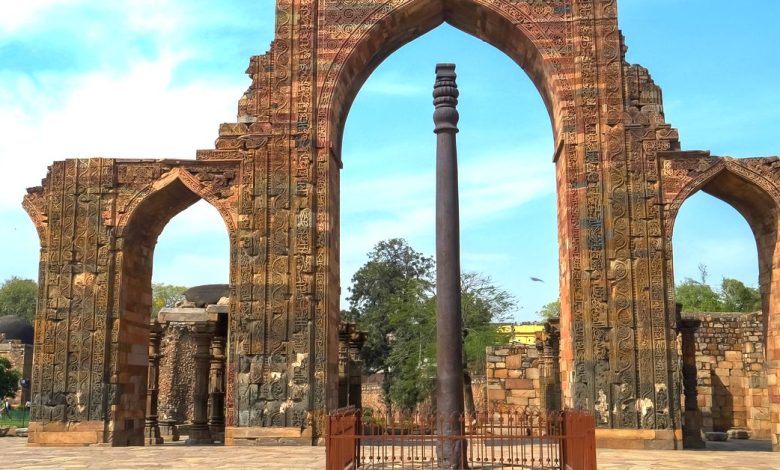A mysterious iron pillar in India has withstood rust for 1600 years

Usually, iron and iron alloy structures exposed to air or moisture oxidize over time, making them covered in rust, unless they are protected, like the Eiffel Tower, with layers of special paint. Scientists both in India and abroad began studying the iron pillar in Delhi in 1912 to try to understand why it had not corroded.
It wasn’t until 2003 that experts at the Indian Institute of Technology (IIT) in the northern city of Kanpur solved the mystery, revealing the answer in the journal Current Science.
They found that the pillar, made mostly of wrought iron, had a high phosphorus content (about one percent) and lacked sulfur and magnesium, unlike modern iron. In addition, ancient craftsmen used a technique called “welding forging”.
This means they heated and hammered the iron, keeping the high phosphorus content intact, a method unusual in modern practices.
Archaeometallurgist R. Balasubramaniam, who authored the report, said this unconventional approach contributed to the pillar’s lasting strength.
A thin layer of “misawite,” a compound of iron, oxygen and hydrogen, is also found on the surface of the pillar, he said. This layer is formed catalytically by the presence of high phosphorus content in the iron and the absence of limestone, thereby further increasing the durability of the pillar.
Balasubramaniam praised the metallurgists for their ingenuity, describing the column as a “living testament to India’s ancient metallurgical prowess”.
Its durability is evidenced by historical accounts, including an 18th-century incident when a cannonball fired at the pillar failed to break it, demonstrating the impressive strength of this ancient monument.
Today, the pillar serves as the emblem of scientific organizations such as the National Metallurgical Laboratory and the Indian Institute of Metals.


